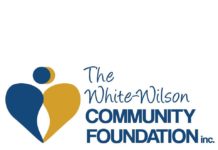 By Kay Leaman, Health Architect
By Kay Leaman, Health Architect
The same virus that causes chickenpox, shingles or Herpes Zoster (VZ) is a reactivation of the dormant VZ within the nervous system. This virus can live in the nervous system for years before being triggered. So, if you’ve had chickenpox, you carry the virus.
Shingles begins as a sensitive red patch/rash on the skin which blisters and appears as a stripe on one side of the body. It can also be very painful and itchy. The striping is due to the breakout following the path of the infected nerve under the skin. These nerves can be located on both sides of the torso, neck and face. One can also experience fever, headaches, fatigue or weakness and severe cases can affect the eye and meninges (covering of the brain). Some cases are “uncomplicated” and typically clear up within three weeks, give or take. The virus has been known to last up to eight weeks.
There are risk factors which can aid in VZ being activated:
• Being over 60 years of age
• Stress
• Chronic lack of sleep
• Being nutritionally deficient
• Use of steroids or other meds that suppress the immune system
• Having a disease that weakens the immune system such as HIV, AIDS or cancer
• Having chemo or radiation therapy
There is no cure for shingles. Vaccines should be discussed with your doctor if you have a high risk factor.
The following therapies can help in relieving symptoms: Rest, cold compresses, calamine lotion, colloidal oatmeal baths (ground whole rolled oats to a fine powder. Added to water it should dissolve in with little to no stirring. Be careful as it can make the tub slippery. After soaking, rinse off with lukewarm water and pat dry. If you don’t have a tub you can make a poultice using cotton cloths) oral Benadryl as well as lidocaine patches (helps reduce itching) and non-steroidal anti inflammatory drugs such as ibuprofen. Narcotics may be necessary to ease the pain and anti-viral medication (acyclovir, valacyclovir, famciclovir) can reduce the course of a shingles outbreak.
Using essential oils have also been used with good results. Oils with antiviral properties are Ravensara, tea tree and lavender. Tamanu oil can be used as a carrier oil and can have skin healing properties. Bergamot and helichrysum are also good oils for consideration. Essential oils are very potent and should not be used until you have spoken with a professional.
In closing, I would like to share a quote from a long-time physician. “Over the course of the past 23 years that I have been recommending nutraceuticals, I have found that many people with shingles appear to get relief, and may possibly reduce the course of the outbreak, with the use of quality micronutrient nutritional supplements. They may also help reduce the occurrence of post-herpetic neuralgia, which is a painful condition that remains after shingles is resolved.”
Here’s to Health
Kay Leaman
Health Architect
HealthyDay HealthyLife
succeed.hdhl@gmail.com
































































